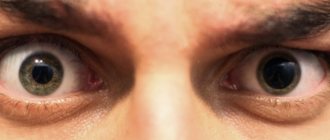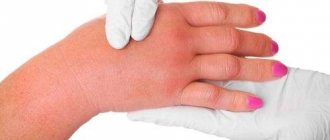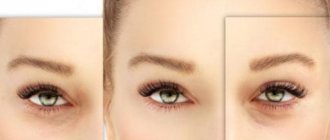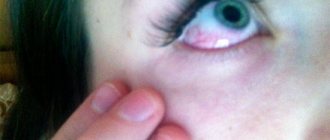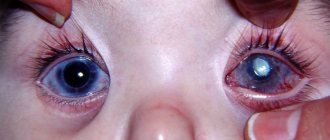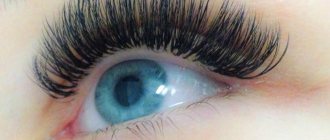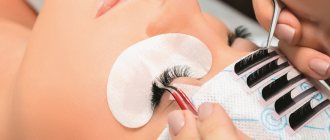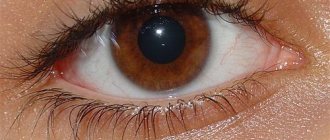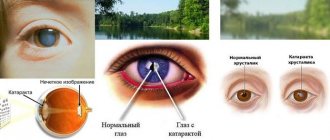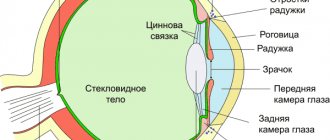A cheek hematoma is an accumulation of coagulated blood; its second name is a blood tumor. A bruise on the cheek spoils a person’s appearance and negatively affects their mood. Before starting treatment for a bruise, it is necessary to determine the type of bruise.
Bruising on the cheek surface is rare; in this situation, it is strongly recommended to consult a medical specialist. The special attention is explained by the fact that there are many nerve channels on the cheek, each of which controls facial expressions. If the nerve canals have been damaged, there is a risk of developing facial asymmetry; in some cases, the problem can remain for life.
In most cases, surgical treatment of hematomas is performed, since the bulge of the bruise on the cheek is directed inward. For this reason, treatment of a bruised cheek requires consultation with a medical professional.
Why does a bruise appear?
In medicine, any bruise is considered a hematoma. It occurs against the background of rupture of blood capillaries and is formed for one of the reasons:
- The presence of diseases of internal organs, problems with the circulatory system (leukemia, hepatic cirrhosis, von Willebrand disease, varicose veins, vasculitis).
- Mechanical impact on the body (bruise, blow, compression, injections).
Bruises under the eyes, which are popularly called bags, occur due to overwork of the body. It can be caused by insomnia, stress, severe physical and mental stress, and excessive drinking.
The mechanism of bruise formation
The causes of hematomas are related to the anatomy of the skin. It consists of three layers:
- Epidermis. This is a thin area that does not have blood vessels and performs a protective function. With a closed injury, it is not damaged.
- Dermis. Consists of connective tissue fibers. The capillaries located in the dermis play a special role in the appearance of bruises. Pain at the site of the injury is felt due to the presence of nerve endings in this layer.
- Hypodermis. Subcutaneous fat is located deeper than the other layers. It contains small vessels. This is where bruises form, since adipose tissue is much softer than connective tissue.
The severity of damage cannot be assessed by the area of the hematoma. A huge bruise may not affect the lower layers of the skin and may not damage the muscles.
Other features of the body play a special role in the formation of hematomas:
- blood composition;
- permeability of vascular walls;
- thickness of adipose tissue;
- structure of blood vessels.
The older a person is, the more often he or she develops hematomas. A child may have no trace left after a blow, while an old person will have a huge bruise due to a similar injury. This is due to the weakening of blood vessels, loss of elasticity of the walls and impaired circulation in them.
Characteristics of types of bruises
Treatment of bruises is carried out after assessing the severity of the injury. Characteristics of types of bruises:
- In grade 1, the patient experiences minor pain, which may intensify with pressure on the damaged area. Damage to the skin in the form of small scratches and abrasions is allowed. Bruises go away on their own within 3-5 days.
- Grade 2 is characterized by a violation of the integrity of muscle tissue. The patient experiences severe pain. Swelling and hematoma form at the site of the injury.
- At grade 3, the patient experiences a violation of the integrity of the skin, the formation of edema and severe bruising.
- At grade 4, damage to muscle, epithelial and nervous tissue is observed. After the blow, the injured area is paralyzed.
A bruise can be external or internal. In the first option, a change in skin color is observed. An internal hematoma on the cheek is accompanied by the appearance of a compaction in the tissues. The external characteristics of the epidermis are unchanged.
Color change
The size and color of the bruise depend on several factors:
- location relative to the vessels (pulsating hematoma occurs as a result of disruption of a large artery, non-pulsating hematoma occurs due to damage to small capillaries);
- the amount of accumulated blood;
- duration of injury;
- force of mechanical action (the higher it is, the deeper the hemorrhage occurred in the tissue).
The appearance and resorption of a hematoma occurs in several stages, which are accompanied by a change in the shade of the bruise:
- Red-purple. The red color is a consequence of damage in the first hours after the injury. This shade is due to the penetration of red blood cells into the skin tissue, which contain oxyhemoglobin of the corresponding color. During these hours, a person feels the greatest pain, and edema forms in the form of swelling.
- Blue or purple. The next day, the bruise acquires this color because the process of oxidation of oxyhemoglobin in the tissues occurs. Resorption has not yet begun, but the swelling is gradually subsiding.
- Green. The hematoma acquires this shade 5-6 days after injury. This occurs due to the biochemical transformation of hemoglobin, which enters the tissue from red blood cells. Biliverdin is formed, which has a greenish tint. Pain and swelling will disappear by this time.
- Yellow. In the final stage, the bruise turns yellow because biliverdin is converted to bilirubin. Over time, the hematoma will disappear under the influence of macrophages, which absorb dead cells. The yellow spot dissolves and leaves no trace.
Similar phases are observed when a significant volume of blood is released. If ice was applied immediately after the blow, the bruise will not look as noticeable.
Home treatments
If the bruise is caused by a blow, you should apply something cold to the sore spot and hold it there throughout the day. This will help reduce the size of the hematoma and speed up its healing. After 2 days, warm compresses are applied. If, apart from the external manifestation of bruising and swelling, there are no other alarming signs, you can do without going to the doctor.
Today, the pharmaceutical market offers a huge number of products to get rid of bruises. These include:
- Lyoton;
- Troxevasin;
- Bruise-off;
- Heparin ointment;
- Badyaga;
- Voltaren;
- Finalgon;
- Hepatrombin.
These ointments have wound healing, regenerating and analgesic effects. It is advisable to use them 7-8 hours after the impact. If you apply them immediately, they will increase swelling and provoke the appearance of a more pronounced hematoma.
As non-traditional methods of treatment, lotions with aloe, compresses with tincture of calendula and golden mustache, cabbage or potatoes, and garlic infusion are suitable. Before using traditional recipes and medications, you should make sure there are no contraindications.
Pharmacy and folk remedies will help to effectively solve the problem of how to remove yellowness after a bruise:
You will need ordinary products that you will definitely find at home. And, of course, high-quality cosmetics “for camouflage” (if the bruise is in a visible place, then, when going outside, apply a layer of thick foundation and blend along the edges of the bruise - that part of the cream that extends beyond the boundaries of the unsightly spot). Be patient, be careful and everything will work out - after all, even pimples on the face can be effectively disguised, and with an ordinary bruise the situation is no more difficult.
For example, it will be useful to apply a paste of boiled potatoes, baking soda and honey to a bruise. The effect of such a mask will pleasantly surprise you with the results.
have the same effect . Divide the potato in half, apply the cut side to the stain and rub lightly. For a stronger effect, attach a piece of potato to the damaged area with a plaster for several hours. A cabbage or crushed plantain leaf will help no less effectively.
In addition, to alleviate the condition of the skin after an injury, it is recommended to grate the onion, add a little honey and dry plantain leaf. This paste must be heated in a water bath. Apply warmly to problem areas several times a day for two hours.
Many mothers are wondering what remedy to use for bruises in children (in particular, to remove yellowness from a bruise)
After all, children are still full of energy, but they don’t yet have the fear and worry about their health that adults do. We bought a children's bicycle, but the child wants to show independence and tries to ride without the help of an adult - he fell or hit his leg, the schoolboy did not put on protective elbow and knee pads, he was playing football and fell, they were enthusiastically running "to catch up" and hit the wall, scratched his hand, etc. .d.
Video: how to remove a bruise, get rid of yellowness after a bruise?
Simple folk methods
The age of the child is one of the main criteria by which an ointment for bruises is selected. Treatment for infants, elementary school students, and adolescents varies greatly, as do the medications that may be used. Bruise relievers for older children usually contain stronger chemicals that can be harmful to a newborn.
- Rescuer. This balm is a combination of natural ingredients, essential oils, milk lipids, echinacea, beeswax, vitamins A and E. A universal remedy for combating various skin damage. The rescuer can be used both for bruises and contusions, as well as for cuts, abrasions and shallow wounds.
- Bruise-OFF. This cream can be used for children and adults. The drug will be useful in every home medicine cabinet. Used to treat bruises on any area of the skin, including the face. The active ingredient of the drug prevents platelets from joining into clots on the treated skin area, which prevents the development of a bruise or hematoma. At the same time, the surface of the skin is moisturized, which reduces inflammation. We apply the drug to the bruise from the age of six months.
Another simple way to eliminate the yellow tint from bruises is with calendula tincture
It is sold in any pharmacies, purchased without a prescription and is cheap. Natural anti-inflammatory! You can make it yourself at home. To do this, you need to infuse the flowers of the calendula herb in alcohol for 2 weeks. Use as lotions and compresses.
Compresses made from a decoction of chamomile or sage help very well . Apply them to a cloth and apply it to the yellowed bruise for several hours, then walk around for a while without lotion, then apply the lotion again for a couple of hours.
The speed of getting rid of yellowness after a bruise depends on what measures you took immediately after the injury. First of all, you need to immediately apply cold to the bruised area. When the bruise itself has already appeared, then warm it up. Well, also use ointments. The most popular anti-yellowing remedies for bruises are Troxevasin, Heparin and Lyoton.
Let's consider one of them:
When to see a doctor
There are a number of cases in which timely medical assistance is necessary:
- A huge and painful bruise on the arms or legs. There is a risk of broken bones or cracks in them.
- Increased temperature, severe throbbing pain, increased swelling. These symptoms may indicate an infection.
- The appearance of a hematoma for no reason. In this case there were no blows or bruises.
- Pulsating hematoma. He speaks of a rupture of a large artery and requires stopping the blood.
Sometimes surgery is required to remove a large bruise. The contents of the hematoma are removed using a puncture needle and syringe.
You should also consult a specialist when all known methods have failed and the bruise does not change color. Individual therapy is necessary in the case of blood clotting disorders, pathologies of the vascular walls, and diseases of the hematopoietic system. Therefore, you should not start self-treatment without consulting a doctor.
In most cases, bruises appear after blows, injuries, or bruises.
Rarely have a pathological etiology or are a cosmetic defect. Special creams and ointments will help eliminate bruises.
Healing depends on the extent of the damage. If such manifestations are a consequence of an unhealthy lifestyle, then symptomatic treatment will not be effective.
How to remove a bruise
If the bruise appeared on the cheek on its own, i.e. without tissue injury, this indicates that the patient has weakened vascular walls, and there is a lack of vitamins and minerals in the body. To choose the right treatment, you need to undergo tests prescribed by your doctor. Based on the examination results, appropriate medications will be prescribed. In addition to medications, it is necessary to correct the diet.
You can prevent a bruise from appearing immediately after an injury by applying a cold heating pad to the injured area. Ice can be used, but it must first be wrapped in several layers of fabric. If it was not possible to prevent the appearance of a hematoma, you can remove a bruise from the face using the following medications:
Causes of a bruise under the eye
It is important to consider that a black eye under the eye, which is not associated with pathological processes, may appear for the following reasons:
- abuse of drugs, alcohol, smoking;
- intoxication of the body;
- chronic fatigue and poor sleep;
- incorrect makeup;
- use of low-quality skin care products;
- genetic predisposition;
- violation of the structure of blood vessels;
- the location of the vessels is too close to the surface of the skin.
In some people, a hematoma may occur with a mild bruise. The healing process takes a long time. This is affected by the specific type of skin. Many diseases can be accompanied by such signs. In this case, bruises appear under both eyes. This is mainly due to disruption of the digestive system. This is often a sign of helminthiasis. Worms cause intoxication and have many characteristic symptoms.
Our video. Mask for dark circles under the eyes
How to remove yellowness after a black eye? It turns out that everything is simple! Start treatment right away and your skin will be clear again in just a few days!
Doctor of the highest qualification category. I have completed higher education at the Vladivostok State Medical Institute, specializing in dermatology. Experience in the field of cosmetology and dermatology - 15 years. I regularly attend international master classes, and am also a regular participant in international congresses and symposiums.
In most cases, bruises appear after blows, injuries, or bruises.
Rarely have a pathological etiology or are a cosmetic defect. Special creams and ointments will help eliminate bruises.
Healing depends on the extent of the damage. If such manifestations are a consequence of an unhealthy lifestyle, then symptomatic treatment will not be effective.
Symptoms
The first symptom of damage is pain.
It all depends on the location of the injury. Unpleasant sensations can radiate to the head, face, nose. Often accompanied by headaches, discomfort, and burning. Heavy impacts can cause a concussion. In this case, the following symptoms occur: nausea, dizziness. Rarely, partial or complete memory loss may occur.
It is worth considering that a blow to the bridge of the nose is always accompanied by bleeding. The injured person should know that blowing blood is prohibited. This can cause a lot of swelling. Doctors recommend using cotton or gauze swabs in such cases. They are placed in each nostril. It is important to understand that cotton fibers can remain on the mucous membrane and cause the formation of pus. Therefore, it is better to make tampons from bandage or gauze.
After the pain syndrome, redness appears. Change in skin color is a characteristic sign. It occurs within several hours after a blow or injury. After this, the color of the damaged skin gradually changes. Within 24 hours, the lesion can spread over a large area.
Heavy impacts lead to decreased visual acuity. Swelling causes difficulty closing the eyelids. It may be difficult for the affected person to close his eyes. This often causes pain.
How long does it take for a black eye to appear after a blow?
After a blow, the injured person initially experiences severe pain. Then swelling appears. It is important to consider that the extent of the damage initially causes only redness. Over the course of a day, the damaged area of skin begins to darken. The area of damage may double in size. This occurs due to internal bleeding.
In addition, additional symptoms may be observed: decreased visual acuity, headaches of various types. Swelling prevents you from fully opening or closing your eyes. Severe injuries can cause bleeding from the ears. In this case, you will need to urgently consult a doctor.
First aid
It is important to consider that timely provision of assistance ensures a favorable result. After a blow or bruise, you need to apply cold to the damaged area. For this, ice is suitable, which must be wrapped in a towel. You can also apply a cold compress. The cold should be kept for 15 minutes, but no more. In this case, you need to pause periodically to avoid hypothermia.
Folk remedies must be used with extreme caution. Bee venom is popular. But it is forbidden to take it to eliminate bruises. The following medications are often used: Heparin ointment, “Bruise off”. These are products that are applied to the damaged eyelid or skin around the eyes.
How many days does a black eye last after a blow?
The presence of a hematoma at the healing stage is accompanied by a change in color. These signs can help you understand when a blow or injury occurred. The shade changes depending on the processes that occur in damaged tissues. The appearance and development of a bruise can be divided into several stages. They develop over several days. Completely disappears within 7-10 days. It depends on the extent of the lesion and timely treatment.
If you do not use medications, healing will proceed as follows:
- Redness appears within an hour;
- After 6 hours the color may turn purple, blue;
- After a day, the outline becomes brown with a green tint;
- Over the course of five days, the bruise will be blue in color and gradually turn yellow;
- After 7 days, the damaged area is significantly reduced in size;
- After two weeks, a yellow spot remains at the site of the bruise.
The bruise fades depending on the degree of damage and size.
Causes
The cause of a bruise on the cheek is damage to the skin tissue after a blow, which can be caused by another person. The impact could have been caused by a fall or other factors. The clinical manifestations of a hematoma on the face are pronounced; it depends not only on the degree of damage, but also on the strength of the capillaries and the degree of elasticity of the skin.
Hematoma stage
The main manifestations of a hematoma are changes in the skin on the cheek area; the shade may be different. When a cheek is bruised, painful sensations occur, facial expressions suffer, arterial channels may pulsate, and the temperature of the damaged area rises.
Experts divide the development of a bruise into 3 stages:
- Swelling and pain occur after injury.
- The skin changes color.
- The bruise resolves, the color of the skin of the hematoma changes.
Stages of bruise by day (photos for each stage)
The impact causes damage to blood vessels. Bleeding occurs under the skin, so it changes color depending on the severity of the injury.
First stage. The blood thickens and coagulates after the blow received. It begins to darken due to the processes that occur in the affected area. The skin takes on a blue, purple tint. This can be noticed within 24 hours after the impact. In this photo you can clearly see what the bruise will look like on the first day.
Second stage. After a few days, leukocytes accumulate in the damaged area. They lead to the destruction of red blood cells in hemoglobin. The last component begins to produce a green pigment, so the bruise takes on this shade around the 5th day. You can see this change in the photo.
Third stage. After these processes, bilirubin begins to be produced in the affected area. This component has a characteristic yellow color. That's why the bruise takes on this color.
The hematoma gradually disappears every day. After 9-10 days, the skin becomes natural color, and not a trace remains of the bruise.
Preparations for rapid resorption of a black eye after a blow
It is important to consider that a bruise caused by a blow can only be cured with special ointments and gels. The following means are mainly used:
- Lyoton. The ointment helps normalize blood flow in the affected area and accelerates tissue restoration. Helps get rid of bruises of varying severity. Apply to the damaged area 2-3 times a day for a week.
- Lyoton forte. The ointment is mainly used for varicose veins. But it eliminates swelling well and produces a resolving effect, so in severe cases it is recommended for bruises under the eyes. Apply to the affected skin 2 times a day until the hematoma disappears.
- Bruise off. This is a popular remedy that is found in almost every home medicine cabinet. The main substance in this product is leech extract. This component has an anti-inflammatory effect and improves local blood flow. Helps accelerate the regeneration of damaged tissues. It is worth noting that the ointment should be applied immediately after a blow or injury. This will help get rid of the bruise faster. Can be applied to skin 5 times a day.
- Badyaga. This drug contains natural ingredients. To make the bruise disappear, apply the ointment 3 times a day. Has an antibacterial effect, normalizes local blood circulation.
- Heparin ointment. A well-known remedy that is recommended to be taken for bruises of varying severity. After the impact, the ointment is applied every hour during the day. When it passes, use is reduced to every 2-3 hours.
Medicines do not require a doctor's prescription.
They can be used independently at home. You should consult a doctor if there is bleeding, a cut, or when the blow was severe and led to a head injury. In this case, treatment will depend on the severity of the damage. If the bruise lasts more than two weeks, you should also consult a specialist.
When is medical attention required?
If there is a bruise on the face without swelling and no pain, you do not need to seek help from a doctor. Treatment at home is sufficient. However, in a situation where the hematoma quickly increases in size, the victim’s well-being worsens - the attention of a doctor is required. If clinical manifestations occur, you must contact a medical facility:
- If the victim loses consciousness or suffers from painful sensations, the attention of a doctor is required. These signs indicate that the bruise on the cheek is accompanied by brain damage.
- Severe pain and pulsation of a hematoma on the cheek should not go unnoticed by a medical specialist.
- The weakness of the victim and an increase in the temperature center are reasons for a visit to the doctor.
- If a hematoma appears without a blow, this indicates vascular weakness and a lack of vitamins and minerals. To determine the exact cause, a doctor's consultation is required.
Color change
The reduction of the hematoma is accompanied by changes in the shade of the skin in the damaged area. Flowering stages may vary depending on how severe the damage is.
At the first stage, the bruise is dark blue in color. If the impact was too strong, the shade may be almost black. The skin gets this color because of hemoglobin. The more substance leaves the vessels, the more hemoglobin will be released in the blood, and the darker the bruise will be. The color also depends on the timeliness of the measures taken: if immediately after the blow a cold compress is applied to the damaged area of the skin, the hematoma will turn out lighter and will be smaller in size.
In the second stage, the blue color remains in the center of the bruise. It turns yellow around the edges. If the bruise is large, yellowness may appear in spots over the entire surface. Heparin compresses and heat help speed up the healing process.
The last stage is characterized by yellowing of the hemorrhage. Sometimes the shade is closer to green. After some time, the bruise will completely resolve and the skin tone will return to normal.
